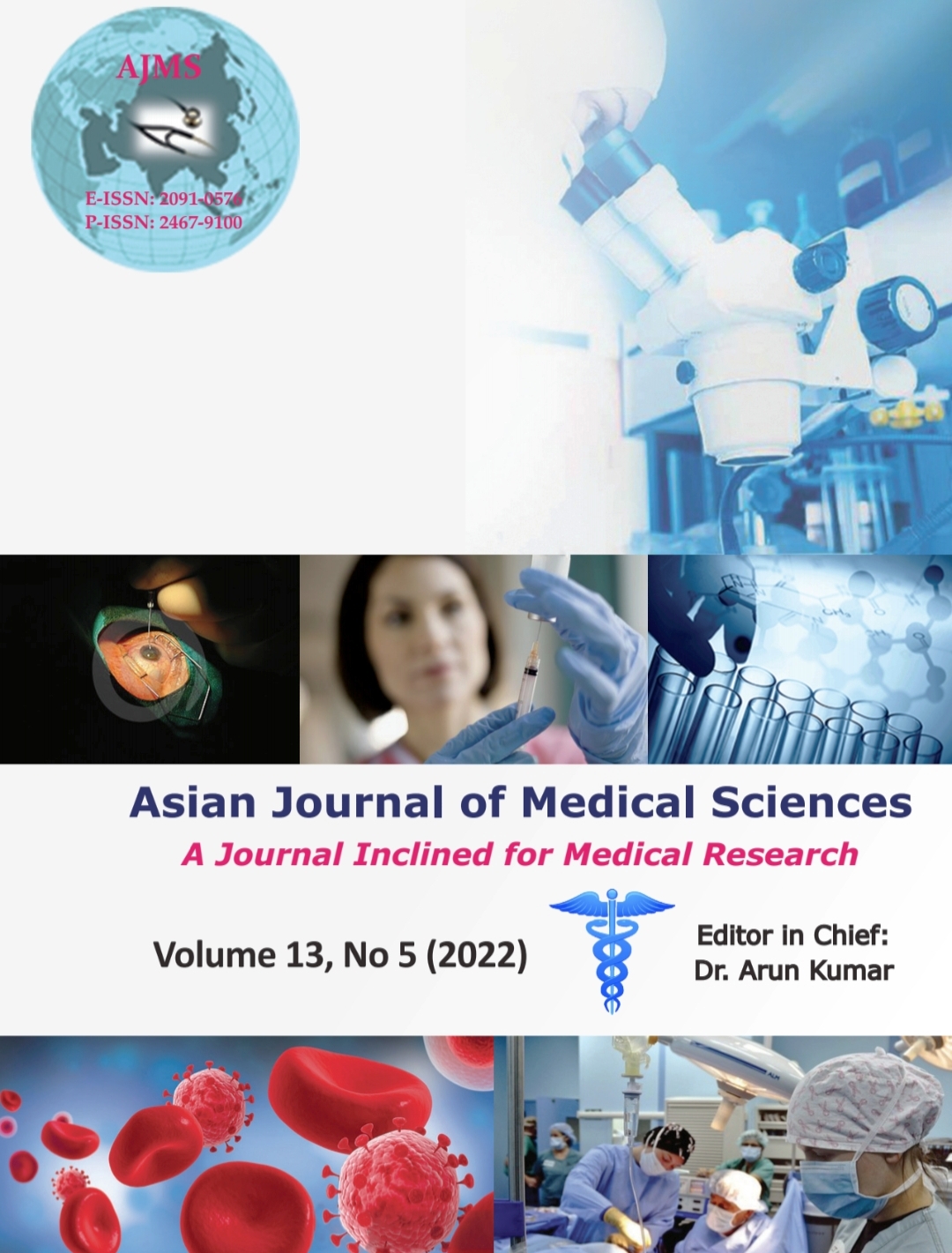Prevalence of Helicobacter Pylori infection in children with iron deficiency anemia admitted in tertiary care hospital
Keywords:
Helicobacter pylori infection, Iron deficiency anemia, Serum ironAbstract
Background: Iron deficiency anemia (IDA) can result from both physiological and pathological events, the etiology of underlying IDA should be determined. Helicobacter pylori infection in children has mostly been associated with recurrent abdominal pain, gastric dyspepsia, or duodenal-ulcer. Other extra-digestive tract conditions such as iron deficiency or IDA have been recently related to the H. pylori infection.
Aims and Objectives: To find out the prevalence of H. pylori infection in children aged 2–18 years with IDA in a tertiary care hospital.
Materials and Methods: Across-sectional observational study was carried out in the Department of Paediatrics, Dr. S.N. Medical College, Jodhpur for a period of 1 year. A total of 52 children aged between 2 and 18 years with anemia (as per the WHO criteria of anemia) were evaluated for complete blood count, peripheral blood film and serum ferritin, serum iron, total iron-binding capacity (TIBC), Upper gastrointestinal endoscopy and two biopsy specimen evaluated for H. pylori and histopathological changes. Normally distributed data means were compared using student’s t-test unpaired and paired. Proportions were compared using Chi-square or Fisher’s exact test.
Results: The prevalence of H. pylori in our study population was 32.69%. In children with H. pylori infection mean S.iron was 25.78±10.24 μg/dl, mean S.TIBC 544.66±91.68 μg/dl, and mean S.ferritin was 6.07±3.00 μg/dl. There was statistically significant difference in serum iron, S.TIBC and S.ferritin between children having H. pylori infection and without H. pylori infection(P<0.001).
Conclusion: There is an association of IDA and H. pylori infection. Therefore prevention and eradication of H. pylori infection might be helpful to prevent IDA, especially in those patients who are not responding to usual treatment.
Downloads
Downloads
Published
How to Cite
Issue
Section
License
Copyright (c) 2022 Asian Journal of Medical Sciences

This work is licensed under a Creative Commons Attribution-NonCommercial 4.0 International License.
Authors who publish with this journal agree to the following terms:
- The journal holds copyright and publishes the work under a Creative Commons CC-BY-NC license that permits use, distribution and reprduction in any medium, provided the original work is properly cited and is not used for commercial purposes. The journal should be recognised as the original publisher of this work.
- Authors are able to enter into separate, additional contractual arrangements for the non-exclusive distribution of the journal's published version of the work (e.g., post it to an institutional repository or publish it in a book), with an acknowledgement of its initial publication in this journal.
- Authors are permitted and encouraged to post their work online (e.g., in institutional repositories or on their website) prior to and during the submission process, as it can lead to productive exchanges, as well as earlier and greater citation of published work (See The Effect of Open Access).




